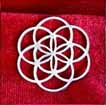
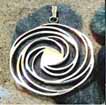
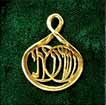
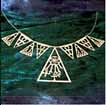
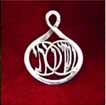
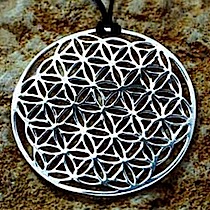
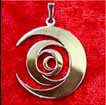
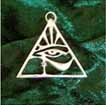
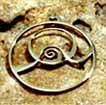
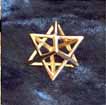
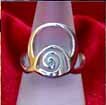
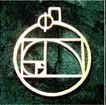
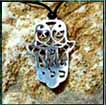
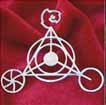
Please Go Here for Regular Sacred Geometry Jewerly Updates on FaceBook.
Gifts of Sacred Jewelry for all Occasions by an Excellent Jewelry Artist ... (Click on images for more info)













 Please Go Here for Regular Sacred Geometry Jewerly Updates on FaceBook. |
|
Welcome to Page Three of Sacred Geometry & Kabbalah Symbols in Mystical Jewelry. Here you can purchase fine sacred geometry jewelry beautifully and personally crafted by the outstanding, spiritual, artistic designer, David Weitzman, whose life-long passion is realizing and expressing the truth behind all religions and to inspire everyone with his jewelry.
Back to the Top of This Page
The information in the following articles regarding the significance of each of these sacred jewelry symbols are dervived from Ka-Gold-Jewelry.com and other sources: Sacred Geometry Jewelry Articles and Related Videos - Part 3
TSUBA - The Katana's Sword Guard A long, curved, single-sided sword used by the samurai of feudal Japan is known as the katana. In the West, the katana became a generic term to designate most Japanese swords. The only ones allowed to be in possession of and handle this sword were the samurai. Because their lives depended on the quality of the sword, they would be extremely careful to pick from only the finest craftsmen around to create their swords. During combat, the steel must never shatter. A serious fight would be fatal for any samurai who uses a blade of low quality. Apart from its use as a deadly weapon, these swords were also considered quite a work of art. The samurai adorned the katana with decorations to exhibit their prosperity and stature. These decorations could be seen on the handle and on its tsuba. The tsuba is the guard around the handle of the sword where the blade starts and the handle ends. While the sword is held in a fight, the tsuba helps keep it balanced, while at the same time, it protects the swordsman from cutting his hand on the blade. In many instances, it can also block the incoming slash from an opponent's sword. During the Muromachi period lasting from 1392 until 1573 and the Azuchi-Momoyama period lasting from 1573 to 1603, the tsuba was created mainly for functional instead of artistic reasons. During these medieval times of war in the history of Japan, they were designed from hardened metal to ensure the protection of the holder in fierce combat. However, during the peaceful Edo period from 1603 to 1868, the states within the Japanese empire became unified under shogunate rule. Tsuba during that period of time were created for more ornamental, ceremonial and pageantry purposes and were therefore designed from softer metals such as gold. Whenever a samurai and his lord showed up at the shogun's court, the tsuba was something much more of a thing to be proudly displayed. The Tsuba Consist of Two Types There are two basic kinds of tsuba: one is created from iron and is known as tetsu; the other type, known as kinko, uses various softer metals such as gold, copper, silver, and alloys. Both the tetsu and kinko can be found as cut out and/or adorned with all manner of carvings and other decorations. Tsuba seem to exhibit all manner of designs. Some can be extremely detailed and lavish while having both symmetrical and asymmetrical designs and patterns. There is no limit to how mischievous, unpredictable and erratic the artists specializing in the forging of their designs can be! Nearly all are cut out in various ways with numerous holes, or often with at least two holes cut through each side, and sometimes at least one hole or no holes at all except of course for the knife in the middle. Many can be valued as high as thousands of dollars each. There are four general forms of tsuba that are listed as follows:
Because the samurai class of warriors are no longer with us in today's world, tsuba are now forms of art and craftsmanship independent of the katana. Many art collectors take special interest in the tsuba and many schools of tsuba craftsmanship exist in Japan. Various methods of tsuba craftsmanship have existed for generations. Those families having samurai ancestors often posses heirlooms, handed down to them from previous generations, with family insignias, seals and mottos in decorative patterns. To original article and illustrations >> Tsuba Back to the Top of This Page MOKUME GANE - Synthesis of Natural Elegance and the Will of the Craftsman People throughout history greatly valued their various forms of jewelry for their uniqueness, beauty, and mainly for their worth. The uniqueness and elegance in the things of nature have long been loved by all people everywhere. Through modification of minerals and metals from the earth, great pieces of jewelry have also been crafted in various shapes and designs to be worn as a mode of self-decoration as well as self-communication. Jewelry can be created in multiple methods. Some ways are more contemporary and other methods come from previous generations and traditions. Some methods use traditional means in a new way. Those methods once antiquated become renewed. The crafting of mokume gane treasures is an example of how ancient customs can be blended with modern methods. The Origin of Mokume Gane Mokume-Gane was introduced to seventeenth century Japan by Denbei Shoami who lived from 1651 to 1728 in Akita Prefecture of Northwest Japan. Mokume gane is a Japanese phrase for "wood eye metal." Shoami was a master metalworker and invented the Mokume Gane technique in the 1600's to create decorative sword guards (tsuba) to be mounted on the hilts or handles of katana which were the swords used by the samurai class in medieval Japan. The governing branch of medieval Japan was the samurai class. Their indications (signs) of distinction or position and their degree of affluence were exhibited in the decoration of their swords. The technique of mokume gane creates variations in the color and texture of the metal so that it resembles the structure of wood grains and knots. It is an elegant way of incorporating the natural and harmonious patterns of wood into the cold, hard strength of polished metal. Because the last of the samurai warriors passed away many years ago (the government established a more modern, western-style army in place of the samurai in 1873), the market for katana and accessories is now dominated by martial artists, professional collectors and those whose interest is to preserve the past. However, the fine art of mokume gane metalworking endures today in the creation of individual adornments, and other wonderful items of fine craftsmanship. Crafting Mokume Gane Jewelry Mokume gane is the fusion of various metals and their alloys. Even though the traditional techniques of mokume gane remain basically similar, contemporary craftsmen of mokume gane jewelry and related items of art came up with changes to the original methods. The metals originally and traditionally used in creating mokume gane included gold, copper, and silver. Newer forms of mokume gane also include metals such as titanium, platinum, iron, nickel and bronze. Typically, mokume gane is created when various alloys or metals are merged together, not completely mixed into one alloy, but heated just enough to meld into a natrually created and irregular, yet surprisingly elegant design. This melding process is created through regulated high temperature and compression. The blended layers of metal are formed into a billet which is a single, solid ingot filled with various streaks and patterns. After the formation of the ingot, it is sliced into a section exposing beautiful and natural looking grain-like shapes of various shades and colors. These days, computer programs are used as templates by modern craftsmen to help them cut out all sorts of elegant shapes most likely to create the most desired effect. After it is cut to the desired size and shape, the ingot or billet is then pounded, formed, rolled and flattened out to make it thinner. It is then shaped for whatever purpose the designer wishes it to be, either a piece of fine jewelry or and object of art. The Elegance of Mokume Gane Jewelry Originally derived from the historic tradition of creating decorative sword guards for the medieval Japanese samurai warriors, the mokume gane method has survived until this day and has all sorts of new applications and expressions. Besides the amazing craftsmanship and beauty of the original tsuba, elegant rings, pendants, and many other forms of art are also created using this method. To original article and illustrations >> Mokume Gane Back to the Top of This Page GOD'S WORD "Knew I then that in Words are the power to open the planes that are hidden from man" --Emerald tablet of Thoth The Pendant of God's Word The Pendant of God's Word symbolizes the idea of the formation of the cosmos as outlined in the Kabbalah and the fundamentals of universal awareness. The empty bubble or sphere of God's Word pendant symbolizes the means by whom the Creator manifests the awareness inside all sentient living forms. When there was "darkness on the face of the abyss" the cosmos manifested from an infinite space. This infinite space is God himself who has no form, explanation or boundary. The boundary of the difference between inside and outside can best be shown by a sphere. A point of reference between inside and outside is therefore created, separating the individual soul from the universe. The Meaning of God's Word This duality of "soul" and "other" is actually an illusion of separation created by the evolutionary mind to keep individuals fighting for survival instead of enjoying the unity of God and all life. This "membrane" of separation is known in the Hebrew Book of Zohar as "Klipa" or peel. Even though it can separate one from wholeness, after enlightenment, subtler forms of this "ego" remains to allow a person to enjoy God from the perspective of an "enjoyer" or "lover" of God. On this pendant, the letters "Beresheet" (Genesis) are engraved on a circle around it. When divided into two parts, "bara sheet" it means "created six" in ancient Aramaic. This number "six" signifies the six directions projected by the Creator from the empty void to produce three-dimensional space. The Hebrew symbol, "PE" which stands literally for the "mouth" with which we communicate, can be found on one side of the God's Word pendant. It was in this way that God created the world (in Genesis) with His spoken word. The sacred enunciated words of God in Genesis, "and God said" represented by the Hebrew word, "Vayomer" can be found inscribed on the other side of the pendant. Beresheet (Genesis) Inside the Hebrew symbol, "Pe" can be found within the Hebrew character "Beit." The "Assyrian" form of Hebrew scribing is used in the Kabbalah. The character "Pe" in this inscription contains the character "Beit" so that the Creator manifests within his words the "Beresheet" (Genesis) and the "Briaa" (Creation). The symbol, "Beit" at the beginning of the above two words, has a numerical value of two (2). The first "cell" of the Great Oneness of creation divides itself into two, and so on, thus continuing the process of creation. To original article and illustrations >> God's Word Back to the Top of This Page TALISMANS - What Are They Used For? The word "Talisman," came from the Arabic, "tillman," and ultimately from the Greek verb "telein," which means, primarily, to initiate into the mysteries, and to achieve or create an influence. An object marked with sequences of patterns, symbols, numbers and/or prayers is usually considered a talisman conferring magical powers, healing, protection, success or other benefits on its owner. The Hamsa pendant, often designed to ward off the "evil eye" and shaped like a symmetrical hand, is a perfect example. These decorative objects have been used by nearly all of the religions throughout history. Using Sacred Geometry on Talismans Having universal power and recognition, sacred geometric symbols are often used in the creation of talismans. Nearly all the philosophical, religious and spiritual beliefs that came into being can be represented as sacred geometry symbols and used by both archaeologists and anthropologists to identify them. A universal, mystical language of both the Creator and of nature itself can be found in sacred geometry. Both Pythagorean geometry and neo-Platonic geometry can also be found in sacred geometry. Spiritual, internal realities can be brought into an external expression through the use of sacred geometry symbols. For instance, the lotus symbol which is depicted as the lotus rising itself above the muddy pond, is a great sign of purity possessing universal significance and meaning with great effect. The Invincible Six-Pointed Star Was Used by King David During King David's reign, "David" in ancient Hebrew was spelled using three letters "Dalet", "Vav" and "Dalet." "Dalet" in archaic Hebrew is a triangle and "Vav" stands for "six." The six-pointed star was therefore used by the king to sign his name. Because this star points in six different angles (up, down, north, east, south west), and represents the reign of God over the entire creation, it was considered to protect one from all of these directions. King David may have placed this design on all his shields as a symbol of security in battle. Many Different Kinds of Talismans Available Some of the mystical and ancient talismans available include the following Jewish and Kabbalah Talismans such as The Star of David, The Hamsa, The Five Metals Ring, and The Tree of Life; Ancient Egyptian Talismans such as Scarab Beetle, Ankh, Heart Symbol, Buckle or Knot of Isis, Djed, Ba, Two Fingers and Udjat or Eye of Horus; Christian Talismans such as the Cross and the Fish; and Buddhist Talismans such as Buddha images, Mandalas, Om Symbols, and the Tibetan Knot. To original article and illustrations >> The Meaning of Talismans Back to the Top of This Page TETRACTYS - Multiple Layers of Spiritual and Mathematical Interpretation The best way to describe the tetractys is a triangle with ten points flowing upward converging at the apex or highest point of the triangle. The way bowling pins are set up in a bowling alley is another way to visualize the tetractys triangle. This symbol is made very intriguing with its multiple layers of information contained within this symbol. The Pythagoreans and the adherents of the Kabbalah give great esoteric meaning to this geometric design. The Tetractys' Pythagorean Significance For the ancient Greek philosopher and mathematician Pythagoras, originator of the Pythagorean Theorem of geometry, the tetractys symbolizes the harmonic, mathematic, and geometric proportions that provide the foundation of creation. There is a special significance found by Pythagoras in each line of the tetractys: * First Line - The first line consists only of a single point. All things emanate from a dimensionless state, which is best described as a single point. The goodness of wisdom is often identified with the quality of oneness, unity or single-pointedness into which all other aspects join together. * Second Line - The second line is two points connected by a single line representing the first dimension. Two points implies duality or separation from the Oneness or God, leading to strife, discord, and conflict. Strife is the power of division leading to the necessity of desire and motion, which leads to the virtues of courage and strength. * Third Line - Here the dots are connected at three points, symbolizing the second dimension and the harmonious marriage of wisdom and beauty as depicted in the mythological figure of "Philotes" or Harmony. * Fourth Line - The four mystical and ancient alchemical elements of earth, air, fire and water are represented by the four dots connected on this line. The Pythagoreans found great meaning, hope and power in the knowledge of the tetractys as a means of achieving purity and peace of mind. The Kabbalah's Interpretation of the Tetractys While the Pythagorean version of the tetractys is arithmetic in nature, the Kabbalistic interpretation of the tetractys is more esoteric in nature. The Kabbalists, in a similar fashion to the Pythagoreans, also interpret the tetractys as a diagram of creation and of the way all things are organized in nature. Nevertheless, the Kabbalists go a step further by aligning it to the Tree of Life. As found in the Tree of Life, the ten points of the tetractys symbolize the ten Sephiroth or the ten faces of God as well. The Kabbalists also saw a connection between the tetractys and the Tetragrammaton, which is the Hebrew name of the God of Israel or YHWH and is the way that the name of God is articulated. Every one of the ten points of the tetractys can be replaced with a letter of the Tetragrammaton. The numeric value of each of these letters adds up to seventy-two (72). The practitioners of the Hebrew tradition and the members of the Kabbalah consider the number seventy-two (72) as a holy number, because it represents the seventy-two (72) names of the Creator. Regarding the above two interpretations given to the tetractys, a wearer of a pendant designed exactly in the shape of the tetractys would communicate the intent of the beholder to gain spiritual enlightenment, and to enjoy an intimate communion with the divine. To original article and illustrations >> Tetractys Back to the Top of This Page THE RIDDLE OF THE SEVEN-FOLD LABYRINTH The Seven-Fold Labyrinth, said to have originated from Palaeolithic times, appears in various locations throughout the globe. Representing the spiritual development of the human being, the labyrinth is an archaic design of Celtic origin and has much significance. The labyrinth is a seven (7) layered pattern that forms a maze. Each layer corresponds to one of the seven (7) chakras or energy vortexes along with the seven (7) stages in mystical evolution. What is the Riddle and Its Significance? The riddle of the Seven-Fold Labyrinth is "how does one find one's way out from its center?" This question represents the idea of the soul's journey out through the seven sheafs of delusion until it reaches God or perfect wholeness. Once a person reaches this spiritual level that person merges at one with the universe. There is a certain geometric key at its center from which the labyrinth can be created, that when turned inside out, one gets a square containing a circle with a dot at its center. This is the symbol of gold in Alchemy, and because it contains all the basic shapes, is said to be be foundation of geometry. It can also symbolize the greatest mystical achievement possible. From this circle, many other forms can be created, such as the Vesica Pisces which represents the start of creation and the foundation of existence. Simply by adding more and more circles resulting next in The Seed of LIfe pattern and then the Flower of Life pattern, and so on indefinitely, all things in the universe are produced. To original article and illustrations >> The Seven-Fold Labyrinth Back to the Top of This Page THE JEWISH STAR OF DAVID In Hebrew, "Star of David" is "Magen David." The Hebrew, "Magen David" translates to "Shield of David" because it was widely thought that the much loved King David of Israel had this symbol visible on all his shields, and used this symbol in the battlefield for protection. This possibility may have been true, however no Jewish artifacts or written material document this claim. This design goes back to early Israel during the reign of the Roman Empire, however it has only become fully identified as a symbol of Judaism in more recent periods. During the 17th century, more and more synagogues started displaying the Star of David on the outside of their temples to designate themselves as Jewish places of devotion. It has been forgotten why this particular design was used for this purpose. In modern times, this symbol is a widely used insignia for the Jewish culture. The "Magan David Adom" symbolized by a red "Star of David" is a nationally recognized first aid and disaster relief organization (the Israeli "Red Cross"). And, of course, the "Star of David" can also be found on the Israeli flag. The Star of David and the Kabbalah The "Star of David" contains two overlapping triangles, one pointing upwards and one pointing downwards symbolizing in the Kabbalah, the various opposing forces, such as good and evil, spiritual and physical; and considered by many cultures from the earliest times to represent the union or harmony of the male and female sexuality. The upward triangle represents the higher aspirations and noble accomplishments flowing toward heaven while the downward triangle represents the descending of blessings from heaven into our physical world. It is also known as the "Creator's Star." The center of the star represents the Sabbath, while each day of the week is represented by the six points. The Invincible Six-Pointed Star Used by King David During King David's reign, "David" in ancient Hebrew was spelled using three letters "Dalet", "Vav" and "Dalet." "Dalet" in archaic Hebrew is a triangle and "Vav" stands for "six." The six-pointed star was therefore used by the king to sign his name. Because this star points in six different angles (up, down, north, east, south west), and represents the reign of God over the entire creation, it was considered to protect one from all of these directions. King David may have placed this design on all his shields as a symbol of security in battle. The Merkaba and the Star of David The pranic flow of the meridians creates an egg-shaped aura of bioplasmic energy encompassing the body. This field is a complex shape with many aspects, often changing in colors depending on which emotions, thoughts and state of health one is having. There are also countless electromagnetic fields with exact geometries culminating toward three fields with the exact same dimensions all combined into a star tetrahedron or a three-dimensional "Star of David." Two of the three tetrahedron emanations can be rotated in opposite directions with a timeless yogic pranic breathing exercise which can help one develop or create the light body, which is a seventeen (17) meter wide pranic field. To original article and illustrations >> The Star of David Back to the Top of This Page I CHING - A System of Divination that Combines Ease, Simplicity, Variability, and Persistency The I Ching, also known as the "Book of Changes" and as the "Classic of Changes" and as "Zhouyi," is one of the most ancient of the Chinese classic texts. This text contains the most essential and basic aspects of Chinese cultural knowledge conveying an ancient system of philosophy and cosmology. The concepts of acceptance of change and balance through opposites is of central importance to this philosophy. However, Western cultures seem to only regard the I Ching as a decision making tool when in fact it is the very heart of ancient Chinese wisdom and philosophy. The book contains a system of divination or method of fortune-telling using a collection of 64 hexagrams. Each hexagram would have a stack of six horizontal lines some unbroken and some with a gap in the center. Every hexagram would have a deep meaning or significance attached to it. Each line of a hexagram completed with these methods is either stable (young) or changing (old); therefore, there are four possible variations for each line, consistent with the cycle of change from yin to yang and back again:
I Ching is also known as "Yi Jing." "Yi" as a verb that stands for "to change" or replace one thing with another thing, and is also an adjective that stands for "simple and easy." "Jing" implies something that is permanent, unchanging, and something written that is of classic origin. The meaning behind this book runs quite deep. There are three concepts that it contains: 1. Simplicity - there is one law or power behind everything. 2. Variability - the constant change that surrounds us. 3. Persistency - those laws, aspects and effects that never change. The Traditional View of the I Ching Throughout the Ages More recently, the I Ching has been mainly used as a method of fortune telling, yet historically it has also been a major source of guidance, inspiration and wisdom in China for millennia. According to tradition, the I Ching was written by the Chinese Emperor Fu Hsi who, according to one source, reigned (or lived?) 115 years from 2953 B. C. to 2838 B. C. The details of his life are engulfed in legend and mystery, while the actual origin of the I Ching may have been a divination method used in prehistoric times, at least as far back as 5000 B. C. According to legend, Fu Hsi was blessed with the knowledge of the eight (8) triagrams which are eight (8) three-lined hexagrams representing heaven, wind, water, mountain, earth, thunder, fire, and lake. By the time another ruler of legendary status began residing over China from 2194 B. C. until 2149 B. C. the (8) triagrams allegedly changed into the sixty-four (64) hexagrams as documented in the scripture Lian Shan. Sometime between 1099 B. C. and 1050 B. C., King Wen and the Duke of Chou added various commentaries to this ancient text. During the period of 722 B. C. until 481 B. C. Confucius was assumed (according to tradition) to have written the "Shi Yi" or "Ten Wings" which is a compilation of further explanations on the I Ching. During the Western Han Dynasty around 200 B. C., Shi Yi was also called, "Yi Zhuan" or "Commentary on the I Ching." In the meantime, "Zhou Yi" or "Changes of Zhou" was also added. Modernist View of the History of the I Ching Considerable research into the Shang and Zhou dynasty (1122 B. C. - 256 B. C.) oracle bones, Zhou bronze inscriptions and other evidence revealed that rather than being the work of one or several legendary or historical figures, the core divinatory text is presently considered to be an accumulation of Western Zhou divinatory concepts. Even the traditional idea that Confucius wrote the Shi Yi was doubted by 11th century A. D. scholar, Ouyang Xiu after a close analysis of the text, and today's scholars attribute most of them to the more recent Warring States period of 403 or 475 B. C. to 256 or 221 B. C. with some parts originating as late as the Western Han period of 206 B. C. to 220 A. D. During the 1970's, Chinese excavators found complete Han dynasty tombs in Mawangdui close to Changsha, Hunan province. One of the tombs contained the Mawangdui Silk Texts, a second century B. C. adaptation of the I Ching, the "Dao De Jing" and similar texts. This variation of the I Ching was created from an archaic text version for the use of its Han patron. As has come to pass with many other archaic esoteric teachings, the I Ching also found its way into modern society and throughout the Western world. The I Ching is now adopted by various practitioners to be applied to the many difficulties of today's society. It is now practiced in a similar way as the Tarot, astrology, numerology, palmistry and other related fortune telling methods. Many fine pieces of jewelry based on the I Ching have also been fashioned in the form of silver and gold pendants depicting a "Yin Yang" symbol in the middle with eight (8) triagrams around the sides with "What was will be again, what happened will happen again. There's nothing new under the sun." written in Hebrew all around its eight (8) sided outer edge. To original article and illustrations >> I Ching Back to the Top of This Page (Affiliate Ad) Sacred Jewelry for any Occasion WholeJoy.com is an affiliate of Ka Gold Jewelry. All jewelry links and images on this page go directly to the secure Ka Gold website. If you have any questions, concerns, or need support, etc. please contact webmaster. Why does David's authentic sacred jewelry sell so well during any season? People are looking for gifts that will truly show how much they love. Gifts that will stay forever and bring inspiration to the gift's receiver. There are not many gifts that really touch the heart the way David's jewelry does. The combination of beauty, ancient history, meaning and art is compelling. Go here to purchase. The Flower of Life can be found in all the major religions of the world. In Egypt, whose tradition many people believe is the source of all the monotheistic religions, the "Flower of Life", can be found in the ancient Temple of Abydos. In Israel, you can find it in the ancient synagogues of the Galilee and in Mesada. Go here to learn more. The SriYantra Penadant: The structure of the SriYantra pendant is one that provides abundance, beauty, and balance between male and female and between spiritual and material. Yantra is a mystical hindu concept that describes a structure or diagram used to balance or focus the consciousness... Go here to learn more. The Golden Spiral pendant generates harmony and tranquility and is a symbol of natural beauty. The Golden spiral structure represents two well known sacred geometry shapes: the... Go here to learn more. The Seed of Life is a symbol for the days of creation. It is treated as a stage in the process of creation of the flower of life - a geometrical shape that symbolizes the whole universe. Go here to learn more. The Vesica Pisces is derived from the intersection of two circles, the Pythagorean "measure of the fish" that symbolizes the mystical intersection of the world of the divine with the world of matter, and correspondingly, the beginning of creation. Go here to learn more. The Tree of Life is one of the most familiar of the Sacred Geometry Symbols. The structure of the Tree of Life is connected to the sacred teachings of the Jewish Kabbalah but can be seen in other traditions as well, such as the ancient Egyptian tradition. Go here to learn more. The Golden Spiral structure represents two well known sacred geometry shapes: the golden mean (phi) spiral and Fibonacci spiral. The Golden mean spiral is the secret proportion of beauty as it exists in nature. Go here to learn more. The Emerald Tablet bracelet contains the symbols of the ibis bird and the feather of Ma'at. The Ibis bird symbolizes Thoth, known as the ancient Egyptian god of wisdom and the scriber of the words of the gods. The feather of Ma'at is the symbol of the goddess of justice, truth and harmony. Go here to learn more. The Nautilus pendant is based on the structure of the Nautilus shell. The Nautilus shell is one of the known shapes that represent the golden mean number. The golden mean number is also known as PHI - 1.6180339... The PHI is a number without an arithmetic solution... Go here to learn more. The Christ Consciousness pendant radiates a very high and subtle vibration and posseses excellent healing characteristics. It is called Christ consciousness because it looks like the human consciousness grid... Go here to learn more. The Mobius strip, also called the twisted cylinder, is a one-sided nonorientable surface obtained by cutting a closed band into a single strip, giving one of the two ends thus produced a half twist, and then reattaching the... Go here to learn more. The Shefa symbol was received in direct transmission from Archangel Metatron by Dvora Pearlman. It was received as a teacher and a tool to learn, to use and to connect with the... Go here to learn more. The Merkaba pendant symbolizes the flow of Prana energy (life force energy) in our body. By utilizing the ancient Prana breathing technique, we are able to restore the Prana flow through the pineal gland at the center of our brain. Go here to learn more. The Flower of Life shape contains a secret shape known as the fruit of life. It consists of 13 spheres that hold many mathematical and geometrical laws. These laws represent the whole universe. Giving the flower of life to someone is like giving them the whole universe in... Go here to learn more. The Christ Consciousness pendant is made from a combination of 2 platonic solid shapes - the dodecahedron (12 five sided facets) and the icosahedrons (20 triangles). The structure of the Christ Consciousness pendant creates the third level consciousness grid of the human race, which is an electro magnetic field that surrounds planet earth and... Go here to learn more. The Gordian Knot pendant symbolizes the idea of unity which binds everything into one. The Gordian knot... Go here to learn more. The Ka Bracelet contains elements from the emerald Tablets and the culture of ancient Egypt. A translation of the hieroglyphs engraved on the bracelet is: "Rise up and awaken, you are not dead, your Ka will remain within you for eternity." Go here to learn more. The Merkaba symbol is based on the Prana energy field and the aura field. It is one of the most powerful symbols in the world. The Merkaba also helps in our spiritual growth and the connection to the higher self. Go here to learn more. The Flower of Life can be found in all major religions of the world. In Egypt, the source of all the mono-theistic religions, the "Flower of Life" can be found in the ancient Temple of Abydos. Go here to learn more. Personal Creation pendant contains the geometrical and mathematical patterns of creation itself as it can be found in nature. The Personal creation shape appeared in the year 1991 in Wessex, England, in a wheat field. Go here to learn more. The Golden Spiral structure represents two well known sacred geometry shapes: the golden mean (phi) spiral and the Fibonacci spiral. It is a based on a crop circle shape known as the "Hackpen Hill Formation" that formed in an English wheat field in 1999. Go here to learn more. The Gordian Knot pendant symbolizes the idea of unity which binds everything into one. The Gordian knot... Go here to learn more. The Abundance Ring Shefa is a word in Hebrew that literally means Abundance. This word, in its highest and most profound meaning, means a tool for creating abundance. It holds powerful kinetic energy, the kind of energy that when coupled with one's intent for the highest goodness and aligned with the Divine will, can move mountains or feed... Go here to learn more. |
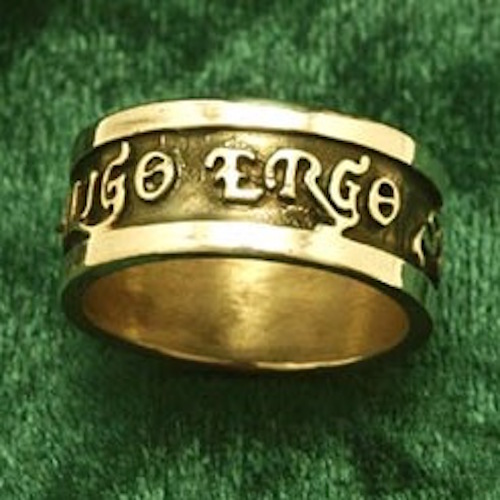 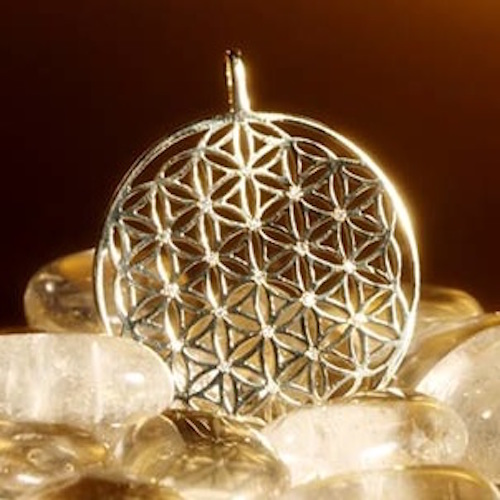 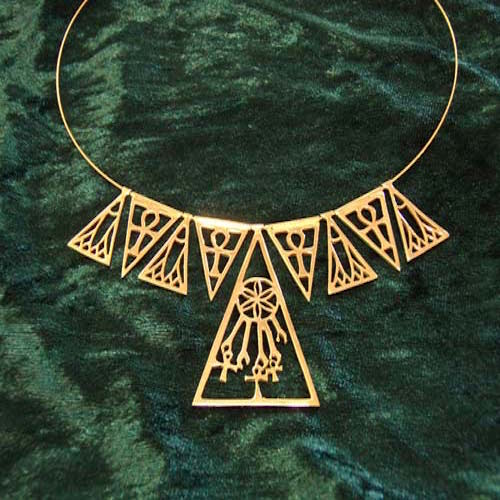 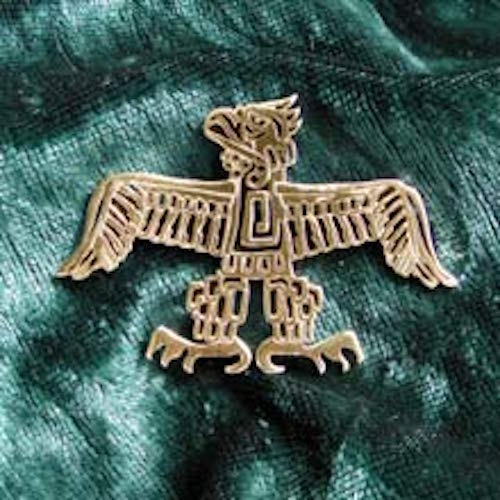 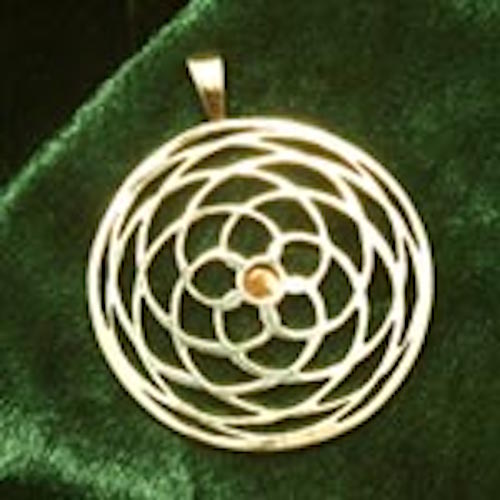 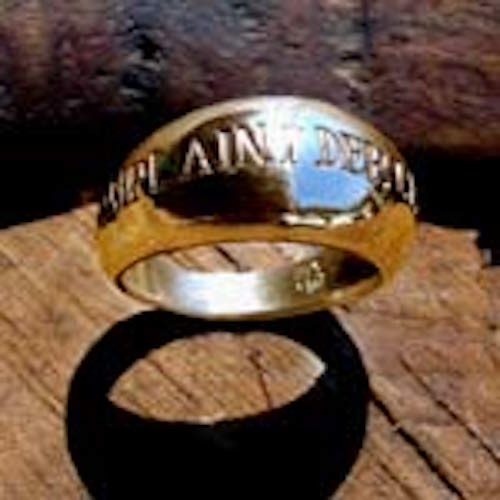 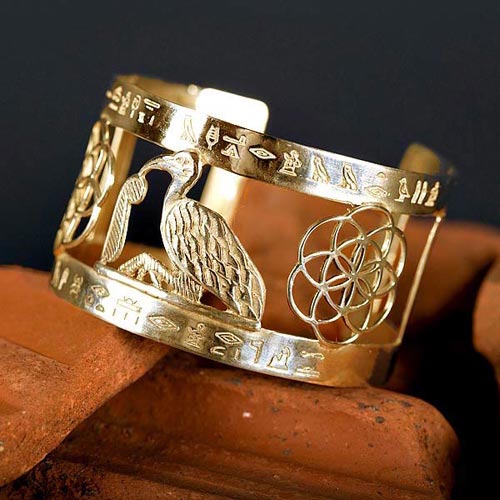 |
*Disclaimer: This material is NOT intended for individuals under 18 years of age. Every web page does contain various affiliate offers that if purchased could financially benefit the author. All information presented on these pages is NOT meant to be a substitute for professional help, competent medical advice or treatment. -- Learn more about the author and his websites: Science of Wholeness and Whole Joy -- Copyright © Russell Symonds 2023 - Back to Top (Menu)